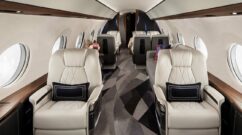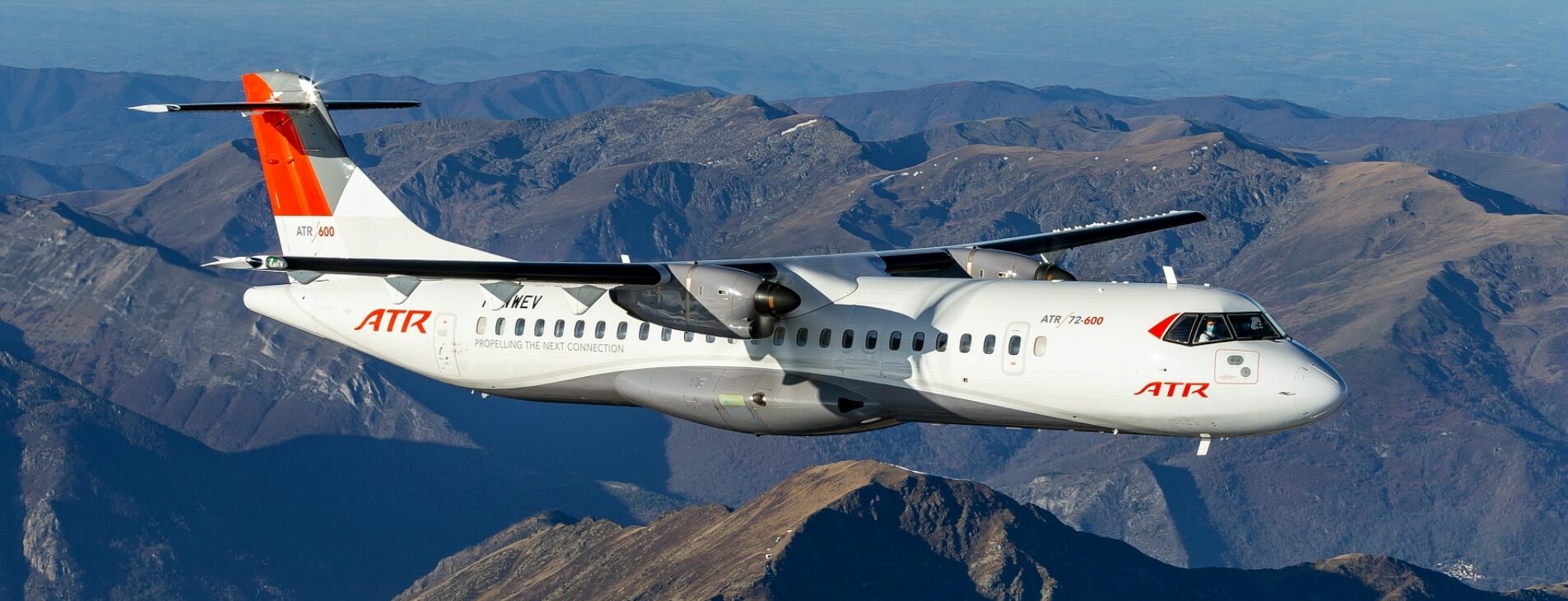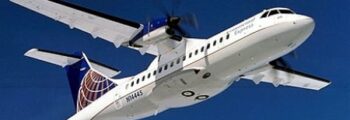The aeronautics manufacturer ATR Aircraft (Avion de Transport Régional) is a economic interest group (GIE) between two legendary companies in the aeronautics industry. These two aircraft manufacturers are Airbus (European aircraft manufacturer) and Leonardo (Italian manufacturer).
Both of these leaders in aircraft design hold equal shares in this group and manage its monitoring. Nathalie Tarnaud Laude has been at the helm of ATR Aircraft since September 17, 2022.
ATR is known for producing two main categories of aircraft, the ATR 42 and the ATR 72.
AEROAFFAIRES invites you to revisit the history, fleet, and actions taken by this transportation company like no other.
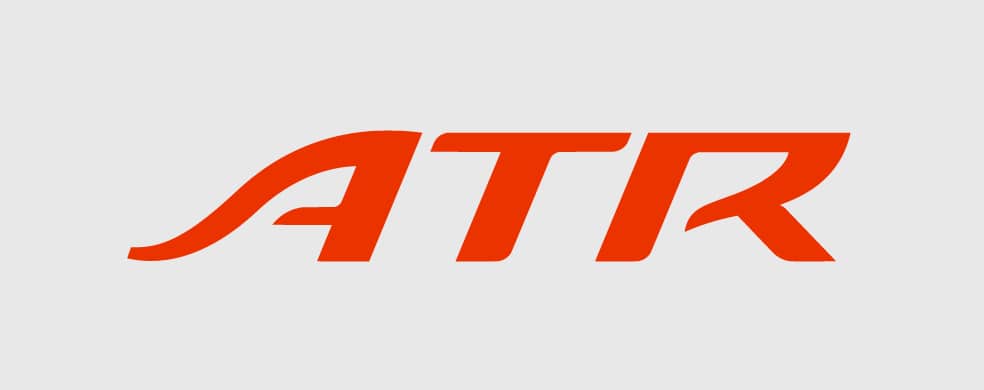
ATR Aircraft today:
Some figures:
1,800: This is the number of aircraft built and in circulation since 1981.
100: This is the number of countries in which the manufacturer ATR Aircraft is present.
1.6 million: This is the turnover achieved (in dollars) in 2021.
200: This is the number of operators around the world.
2,095: This is the number of routes created.
1,300: This is the number of airports served.
An aeronautics group committed to reducing CO²:
For the aeronautics company, reducing CO2 emissions and combating climate change are real challenges.
On one hand, the fact of betting on the production of turboprop regional aircraft is a true advantage. Indeed, they consume less fuel than similar aircraft with turbojet engines. Comparatively, there is about a 40% reduction in fuel consumption.
Moreover, ATR aircraft are capable of flying on 50% biofuels (SAF: Sustainable Aviation Fuel). Their goal is to increase this rate to 100% within the coming years.
In 2019, ATR was the first company to benefit from green financing (promoting energy transition).
Additionally, in January 2021, the company implemented at some of its factories (like their headquarters based in the Toulouse region) a rechargeable electric power supply from renewable energy sources.
In addition to limiting pollution from aircraft in flight, this also limits pollution during manufacturing stages.
ATR aims to halve the amount of greenhouse gases it emits by 2030.
The beginnings of the ATR group
1981: The ATR group was born in Paris, not far from Paris Le Bourget Airport. The company tries to establish its place among the numerous competitors in the aeronautics sector, including industrial giants like Boeing. Following its creation, a project for a passenger plane emerged, namely the ATR 42. The main idea was to combine flying efficiency, practicality and maneuverability of the aircraft, as well as accessible aeronautical maintenance with good aerodynamics. And indeed, the aircraft will be built.
1982: The first orders are signed. Airlines such as Finnair, Air Littoral, Cimber Air, and Command Airways request deliveries of ATR 42 to their aircraft fleets.
1984: The ATR 42 jet makes its first flight. The aircraft then receives certification the following year from the member countries of the GIE (France and Italy).
1985: The ATR 42 conducts its first commercial flights with the French airline Air Littoral.
1989: The ATR 72 is born. It is an evolved version of its predecessor, the ATR 42, but with more space and thus longer.
1996: The ATR 42-500 replaces all versions of the ATR 42 built until then.
The difficulties and recovery of ATR
The aeronautics manufacturer ATR has two main aircraft:
-
- the ATR 42
- the ATR 72.
Nevertheless, the oil crisis is a boon for the company, which manufactures fuel-efficient aircraft. It is thanks to this opportunity and this competitive advantage that the ATR group is recovering its footing in the aeronautics activity.
With an average of 50 ATR deliveries per year since 2000, it was in 2011 that the company reached a record. Indeed, that year, the manufacturer sold 157 aircraft and an additional 79 potential others.
Since then, around 200 airlines have an ATR aircraft in their fleet.
Moreover, a new version of the ATR 72 has been a resounding success, allowing the company to achieve a turnover of 1.3 billion euros that same year. Having come close to the brink, ATR is indeed saved from the crisis.
And this trend will be confirmed in the following years. The company regularly has numerous orders.
The aeronautics manufacturer ATR becomes a true pioneer in the world of the aviation industry in these types of regional aircraft, holding 37% of sales in the category of aircraft with fewer than 90 seats.
However, a recent decline in sales is to be noted for the company. The firm has only made 10 sales of aircraft out of the 72 initially planned.
In 2020, aircraft orders fell due to the coronavirus pandemic. The delay in deliveries had a very negative impact on the regional aircraft manufacturer.
The fleet of 4 aircraft from the ATR manufacturer
ATR 42-600
The ATR 42-600 is a turboprop ideal for regional aircraft trips.
Indeed, with a range of only 1,000 km, this aircraft can make short and medium-haul flights.
It is ideal for group flights, business flights, or air freight.
This aircraft can carry up to 50 passengers depending on cabin layout. The cabin is also spacious and ensures a comfortable journey.
This aircraft offers a very good price-quality ratio. Indeed, its operational cost is lower. And, during a flight, this aircraft consumes about 30% less fuel than other regional aircraft.
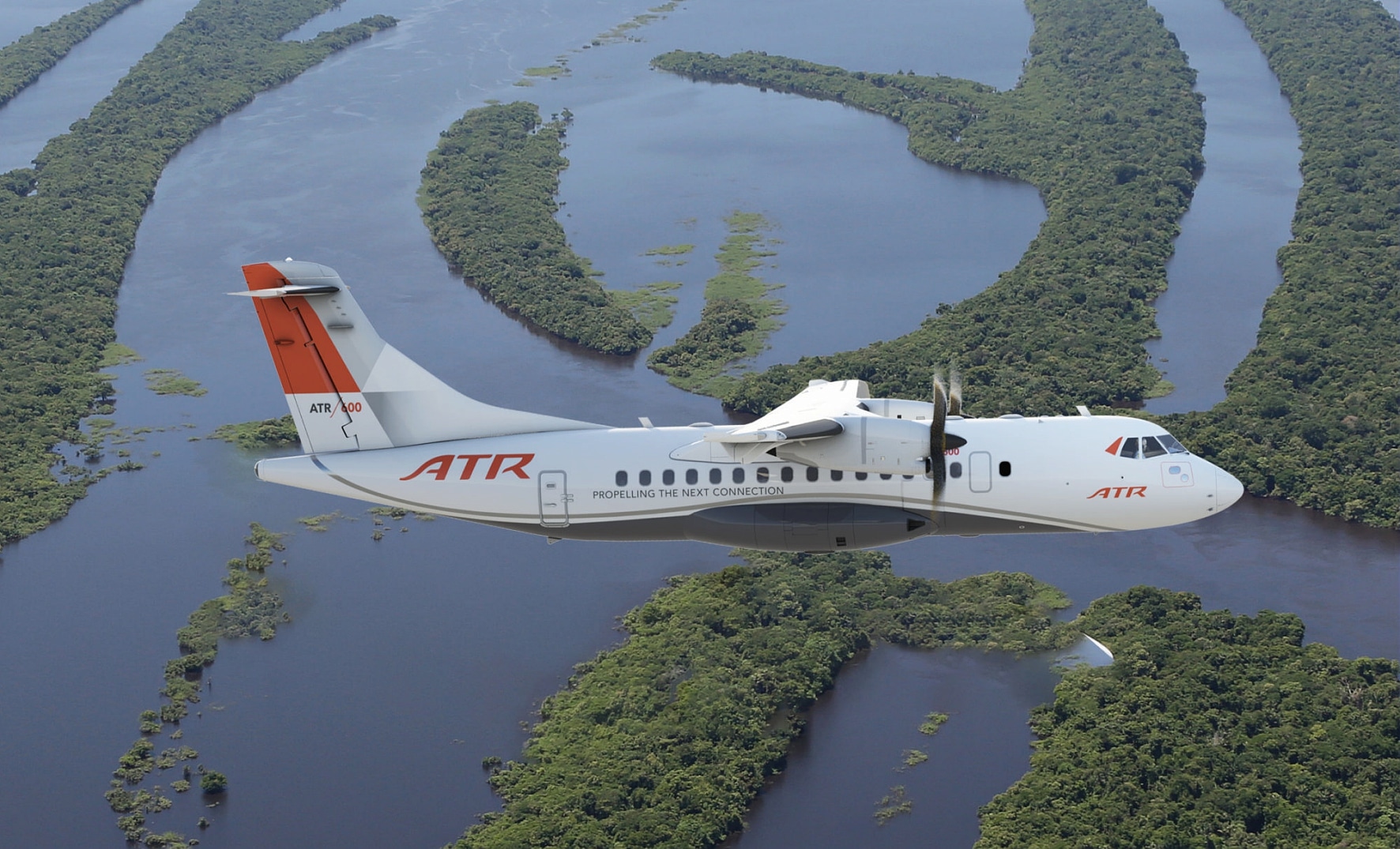
ATR 42-600S (STOL)
This version focuses on improving the performance of the ATR 42 aircraft, offering a renewal of the fleet.
Indeed, the term STOL : “Short Take Off and Landing” indicates short takeoff and landing distances. This version has real improvements to successfully land on a short runway.
ATR 72-600
It is presented as the most fuel-efficient aircraft in its category.
The ATR 72-600 is the extended version of the ATR 42-600.
It carries up to 78 passengers depending on its configuration.
Ideal for group trips, for example, this aircraft is fuel-efficient. It offers a very good price-quality ratio and performance.
With its lowest cost per seat in regional aviation, the ATR 72-600 has a true competitive advantage.
This aircraft is the first one financed by green funds.
Finally, the adaptability of this regional aircraft is such that it becomes the first choice for operators in this category.

ATR 72-600F
Delivered in 2020, the ATR 72-600F is one of the latest cargo-type aircraft (large-capacity) that completes the aircraft manufacturer’s fleet.
Generally, these aircraft models are manufactured for air freight and cargo flights only. They also do not have windows.
With this aircraft model, ATR emphasizes the importance of its cargo transport mission. ATR aims to assist all communities around the world as best as possible.
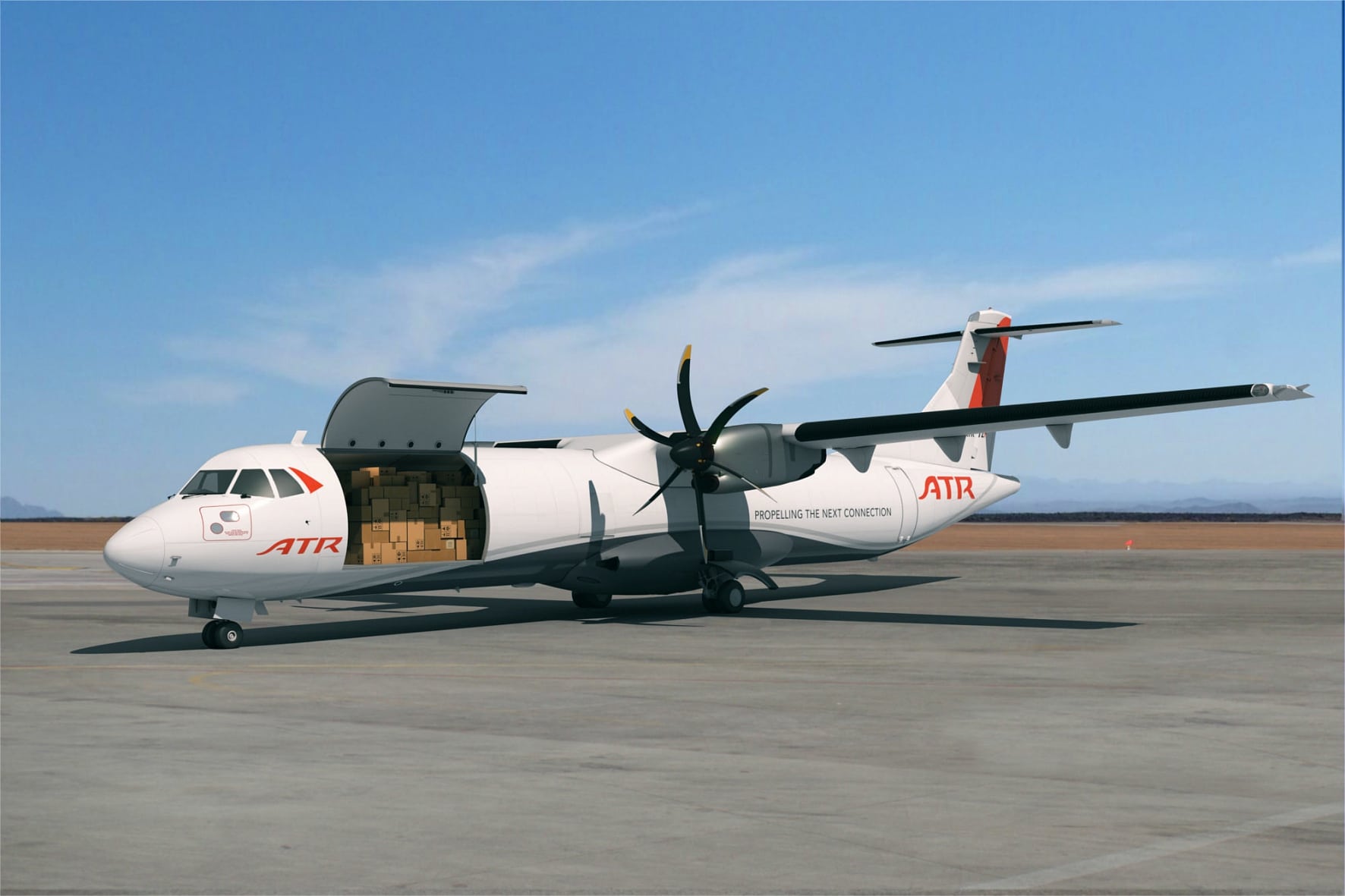 Photo credit: ATR
Photo credit: ATR
The assembly of ATR aircraft
As a consortium of the two entities Leonardo and Airbus, the manufacturing of the aircraft occurs in different locations based on the parts. For example, the fuselages, along with various tail components, are produced by Leonardo in Italy.
Regarding the wings, they are manufactured by a subsidiary of Airbus near the city of Bordeaux in France.
Finally, ATR carries out all the final tasks for these aircraft (assemblies, tests, deliveries, etc.) in Toulouse, at one of Airbus’s sites.
A presence around the world
This is one of the functions that ATR aims to fulfill: to create and manufacture aircraft for civil aviation with the goal of providing global coverage to its users and their various needs.
Another of its main functions is to manufacture regional turboprop aircraft that are as versatile as possible.
ATR tries to adapt as best as possible to the needs of its clients by modernizing its fleet. It is comfortable and up-to-date with technology.
The idea is to be operational in as many places around the globe as possible. Ensuring a global presence allows the aeronautics manufacturer to respond to increasingly specific needs.
Moreover, besides producing efficient aircraft that meet the needs of its operators, ATR is committed to having an increasingly positive ecological impact.
Some additional information on Airbus and Leonardo
As previously mentioned, ATR is the result of a partnership between two entities, Leonardo and Airbus. Here is some additional information about these two companies that, combined, create new aircraft.
AIRBUS:
Airbus is a company among the leaders in the aeronautics world.
In a few figures, it should be noted that in 2019 this company achieved a turnover of nearly 70 billion euros.
Airbus employs nearly 135,000 people across its various branches.
This company is particularly recognized due to its diverse missions and achievements.
Indeed, it manufactures both commercial airliners for commercial flights and private jets for business aviation, as well as helicopters.
It also operates in the fields of space missions, air freight, and military aircraft and parts.
Leonardo:
Leonardo is a diversified Italian aircraft manufacturer in its operations.
This significant company employs about 46,000 people and operates in nearly 120 locations around the world.
With its strong presence, it excels in the aerospace industry.
It manufactures numerous types of aircraft. Indeed, it also undertakes missions in cybersecurity, electronics, and security.
CHARTER a regional ATR aircraft with AEROAFFAIRES:
For your requests for air freight, cargo, as well as group flights for example, at AEROAFFAIRES we have the ability to select the aircraft you want based on your needs. Please fill out the online quote or contact us at +33 (0) 1 44 09 91 82.



